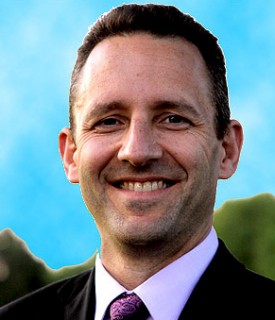Overcoming Patient Barriers to Chronic Disease Management
Non-compliant patients aren't simply ignoring their chronic disease management plans; they usually have a series of barriers keeping them from adherence.

Source: Thinkstock
- Improving adherence to chronic disease management and treatment plans is a critical facet of improving outcomes and keeping costs low. In order to engage patients, communicate efficiently, and help individuals achieve their wellness goals, providers must identify barriers to patient adherence and work collaboratively to overcome those obstacles.
Chronic disease is a prevalent and expensive issue in the healthcare system. About half of US adults, or 117 million individuals, have at least one chronic disease, according to 2012 data from the Centers for Disease Control (CDC). This high volume of chronic illness accounted for approximately 86 percent of healthcare spending in 2010, the CDC says.
Those costs are further exacerbated by the nearly 80 percent of patients who drop out of their chronic disease management programs, setting them up for complications or worsening symptoms down the road.

Lisa Roome-Rago
Source: Advocate Health CareGetting through to the non-compliant patient has long been a top priority for clinicians, said Lisa Roome-Rago, Director of Enterprise Outpatient Care Management at Advocate Health Care.
“Patients who are not following their treatment plan oftentimes get labeled as non-compliant,” Roome-Rago said. “Our job is to better understand that.”
Part of understanding non-compliance means acknowledging that most patients aren’t stubborn contrarians. Instead, they are usually patients who simply cannot follow their care management plans to the letter for one reason or another.
“People don’t wake up in the morning and think ‘I’m not going to follow what my doctor told me to do today,’” Roome-Rago asserted. “It’s a matter of figuring out what’s actually going on and then trying to create a plan around that and minimize as many barriers as you can.”
Managing medication costs to ensure access and adherence
Medication adherence is a core component of chronic care management. Patients who do not take their medications cannot manage their symptoms or work toward better overall wellness.
Unfortunately, access to and management of medications is by far one of the most common barriers to chronic disease management compliance due to a variety of factors, including rising drug prices.
Twenty-five percent of patients are paying more for their medications than they did a year ago, and 14 percent of those patients did not fill a prescription due to cost, according to data from Consumer Reports Best Buy Drugs.
Nearly one-quarter of patients have said that they aren’t confident that they can keep affording their medications in the future.
“Financial barriers are definitely cumbersome because we are coming out of a recession,” Roome-Rago noted.
At Advocate, Roome-Rago says care managers keep a list of generic medications and where patients can obtain them in order to ensure that individuals can access the lowest-cost options for their care.
“If a care manager can reduce a copayment of $500 to $20, that is a huge win for a patient and it really helps with that value proposition and allows the manager to do something that is meaningful for that patient,” she said.

David Weinstock
Source: Grove Medical AssociatesDavid Weinstock, MD, a primary care physician at Massachusetts-based Grove Medical Associates reported similar challenges. Discussing financial issues with patients can be a sensitive subject and requires a careful approach, he advised.
“Patients don’t always like to admit that they’re having trouble with payments,” Weinstock explained.
“The way to overcome these barriers is by working with the patients. I usually ask them more than if they’re taking their pills. I try to get a little more information from patients like if they’re taking pills, how they’re getting them, where they’re getting them.”
Once he discovers a cost barrier, Weinstock discusses more budget-friendly options with the patient. Certain pharmacies carry more generic medications than others, he explained. He’ll also prioritize certain medications if the patient’s financial situation is particularly dire.
Integrating health IT tools into the chronic care process
Health IT has become an effective way to bolster patient engagement, particularly in the chronic disease management sphere.
“Technology can play a great role if the patient is willing to use it,” Weinstock asserted. “Through our patient portal website and mobile app, we can track patient information if they are willing to get on and offer up their blood pressure or blood sugars.”
mHealth and other remote patient monitoring systems can also help supplement patient data within the EHR, Weinstock explained.
“Some available devices have the Bluetooth ability to transmit blood pressure,” he pointed out. “For some of my patients who are diabetic, being able to track all of that on the portal and into our EHR will help us make medication adjustments. And through tracking their blood pressure, they’re innately engaged and know what their numbers look like and what the trends are.”
Roome-Rago agreed that health IT tools are valuable for keeping patients engaged and aware of their health status.
“Technology connects patients to their disease processes,” she said.
“We have a pilot with a Bluetooth glucometer that gives that patient immediate feedback and that information also goes electronically to a centralized location where a text message can come back to that patient,” she added. “The message might say their sugar is way out of range. That feedback serves as a reminder to keep them on task.”
Despite the potential benefits of these technologies, patients and providers have been slow to adopt them.
A 2016 HIMSS Analytics survey found that only about half of healthcare professionals actively use patient engagement technology. Another survey from TELUS Health found that although 90 percent of patients recognized the benefits of mHealth, only 15 percent have actually used these tools.
At Grove Medical Associates, Weinstock uses demonstrations in the clinic to pique the interest of patients.
“You can demo the app, show them how they can use the app, and what we see on both our ends,” he explained. “I always remind patients that in my office I always message back directly. I tell patients to send a demo message and I’ll show them how I message them back. Once patients realize they can message me directly and I’m the one who’s answering them, we can get them to engage.”
However, Weinstock often encounters patients who – despite a desire to fully engage in care – cannot or will not utilize health technology. Whether the patient does not have access to a smartphone or has low digital health literacy, he finds that they struggle to integrate these tools into their daily routines.
In those cases, Weinstock cuts his losses and defers to more traditional and less technology-driven engagement strategies.
“Technology is hard,” Weinstock conceded, noting that a clinician cannot force a patient to use a certain tool.
“If you don’t have a smartphone or a computer, it can be difficult. We resort to setting actions or alerts in our system. Once a week it might pop up to call Mrs. Smith. We’ll revert to that if we need to because whatever method works for the patient will be best.”

Fostering strong relationships to enhance patient engagement
Whether a patient is using the latest smartphone app or a traditional land-line, connecting with individuals and effecting meaningful change in their lives is a difficult task for clinicians.
Technology may help with this process, but a personal relationship on an individual level will always be a critical part of improving patient health.
“You might talk to 100 patients and you might only get five to become involved in chronic care,” Weinstock said. “Having been in practice for over 13 years, I try to rely on my experience with the patient and try to get them to realize how important something is.”
For example, clinicians may be able to hammer home the importance of chronic care management by reminding patients of previous events and bringing up the experiences of friends or family.
“When little things pop up, you try to latch onto them and say, ‘You’re fine now, but if you’re not careful, this can become more of a problem for more potential issues,’” Weinstock said. “I try to find examples; try to reach them in that way, and preach preventive care and routine follow-up.”
It is also important to remember that most patients are not ignoring doctor’s orders out of defiance, Roome-Rago said. Many patients, especially those with multiple comorbidities, might simply not understand all of the engagement efforts at play.
One in four adult patients have multiple chronic diseases, the CDC says. For patients over the age of 65, that number jumps to three-quarters of individuals.
When one of those comorbidities is a mental or behavioral health issue, physicians and care managers face an uphill battle.
“It takes a skilled clinician to have the motivational interviewing skills to make it safe for patients to talk about those things,” Roome-Rago explained. “That clinician must assess for how depression impacts patient adherence, for example.”
They must also offer assistance to patients who feel unable to cope with their care needs on their own.
A 2017 survey from Kelton and West Healthcare showed that 80 percent of patients know they must improve their chronic care self-management, but require a provider’s help to do so.
And an American Heart Association survey showed that patients understand the link between poor health metrics and chronic disease, but don’t know where to begin to manage their conditions.
Larger health systems such as Advocate have the means to deploy care managers who are solely in charge of patient outreach. When a primary care provider can’t get through to a patient or when the PCP notes there are several complex health issues at play, they can call upon a care manager for extra help.
“Care managers have the luxury of time that primary care physicians do not have to try to understand and break down barriers,” Roome-Rago said.
While most healthcare organizations target their interventions to patients with the highest clinical risks, they may produce better results by focusing on patients with the highest impactability scores instead.
The population with the highest impactability, or the likelihood that an individual will respond to a certain strategy or intervention, might not align completely with who has the most comorbidities or highest spending, says Community Care of North Carolina (CCNC).
“Within the NC Medicaid population, we see only a 53 percent overlap between the top 5000 patients with highest impactability scores and the top 5000 patients with highest risk of inpatient admission.”
“Highly impactable patients are characterized by both clinical complexity and abnormal utilization patterns,” the organization continued. “Eighty percent have 3 or more chronic conditions and 70 percent have mental illness.”
Understanding what makes a patient willing to respond to interventions and what may be preventing them from improving their health is at the root of successful chronic disease management.
Doing the most good for the most patients is the end goal in healthcare. As the chronic disease management patient population continues to grow, healthcare organizations will need to develop a stronger action plan to serve these patients in the most efficient and cost-effective way possible.
Uncovering barriers to care and obstacles to meaningful chronic care management - and guiding patients through the process of improving their overall wellness - will help providers and patients achieve their goals while keeping avoidable costs low.
